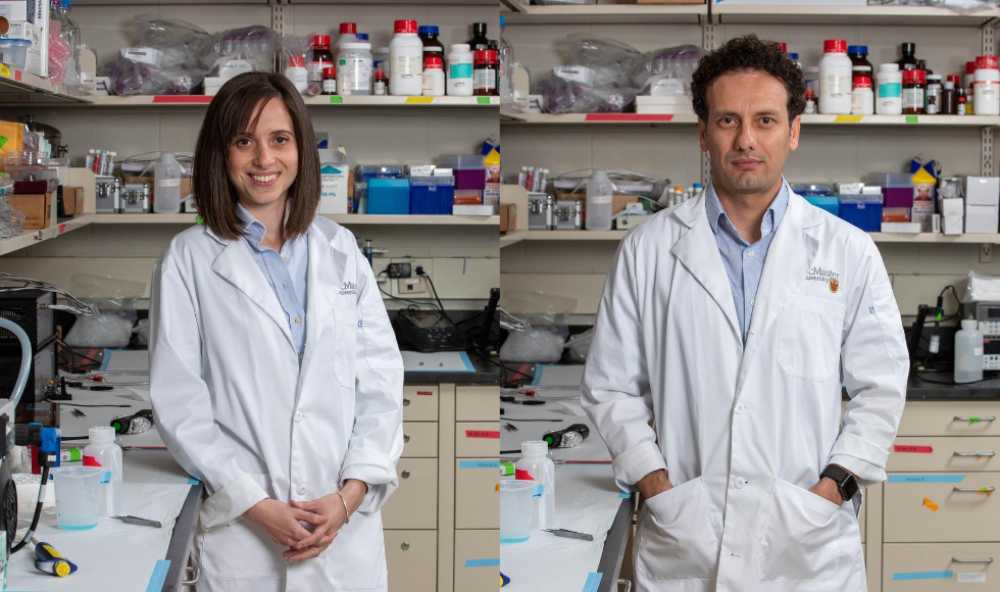A self-cleaning surface from McMaster University took home top honors in the annual 2020 "Create the Future" Design Contest, produced by SAE Media Group.
The transparent and flexible film known as "RepelWrap" instantly fends off viruses and bacteria when the material is placed on a surface, including a door handle or railing.
Inspired by the water-repellant lotus leaf, the shrink-wrappable covering can be manufactured onto biodegradable and green plastics to alleviate concerns about sustainability and recyclability.
"You can think of this as a thin plastic film that can be wrapped around an IV pole, followed by a heat shrinking so that it can get tightly adhered to the pole like a skin that keeps it clean," said co-inventor and co-winner of the $20,000 "Create the Future" Design Contest prize Leyla Soleymani.
Engineers and students from 60 countries submitted new product ideas to this year's contest, which was established in 2002 to recognize and reward engineering innovations that benefit humanity, the environment, and the economy. The 2020 competition, which revealed its winners on November 12, was co-sponsored by COMSOL and Mouser Electronics . (Analog Devices and Intel were additional supporting sponsors.)
In a short Q&A with Tech Briefs below, Soleymani and co-inventor Tohid Didar explain why RepelWrap is especially valuable as the world confronts a pandemic like COVID-19.
Tech Briefs: When does the story of this invention begin? Did it begin before the pandemic?
Leyla Soleymani: The invention started about five years ago when we wanted to develop new materials that reduced biofouling for use in biosensing. We soon found out that this new material we had developed repelled a wide range of contaminants, including infectious pathogens.
At this point, we teamed up with a microbiologist to assess how well these materials repel bacteria and whether they reduce the formation of biofilms. This started our work in using this surface as a way of reducing the spread of infectious pathogens.

Tech Briefs: Where do you see RepelWrap being used in the future? Has COVID-19 changed how you feel about its potential applications?
Leyla Soleymani: There are so many possibilities. It can be used on high-touch surfaces in hospitals, public transport, and schools. It can also be used to develop new food packaging that stays clean. It can also be used to build antimicrobial gloves or other personal protective equipment. Certainly, the COVID-19 pandemic has made us think of new applications especially in the category of personal protective equipment. We are exploring the use of the RepelWrap in face shields and gloves.
Tech Briefs: What’s next with RepelWrap? What are you working on now?
Leyla Soleymani: We are working on addressing multiple milestones toward commercializing this technology. We are now working on revising our manufacturing processes to make sure this technology can be scaled up by manufacturers. We are also testing RepelWrap against a wide range of pathogens to see its versatility. Regulatory approval is another milestone we need to meet before commercialization that we are trying to build the foundation for.
Tohid Didar: The core competency of our technology is in the bio-inspired design of hierarchical structures starting from micrometer scale down to molecular level. We demonstrated this initially on plastics, but moving forward, we will also focus on inducing this novel coating on other materials, like metals and woods, so that the coating can be part of the initial bulk material, and can be widely produced and applied for a variety of applications.
What do you think? Share your questions and comments below.
Transcript
No transcript is available for this video.


